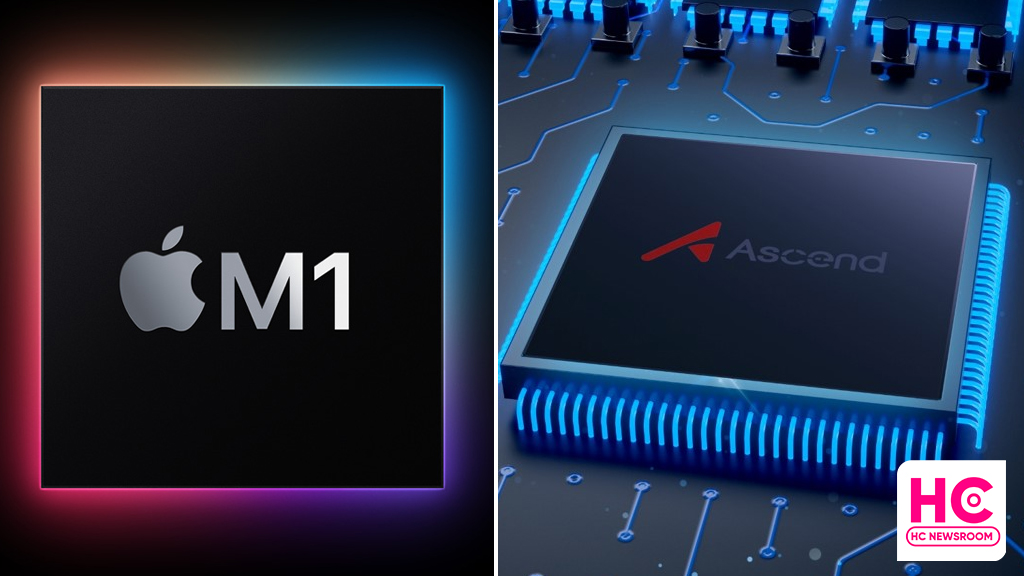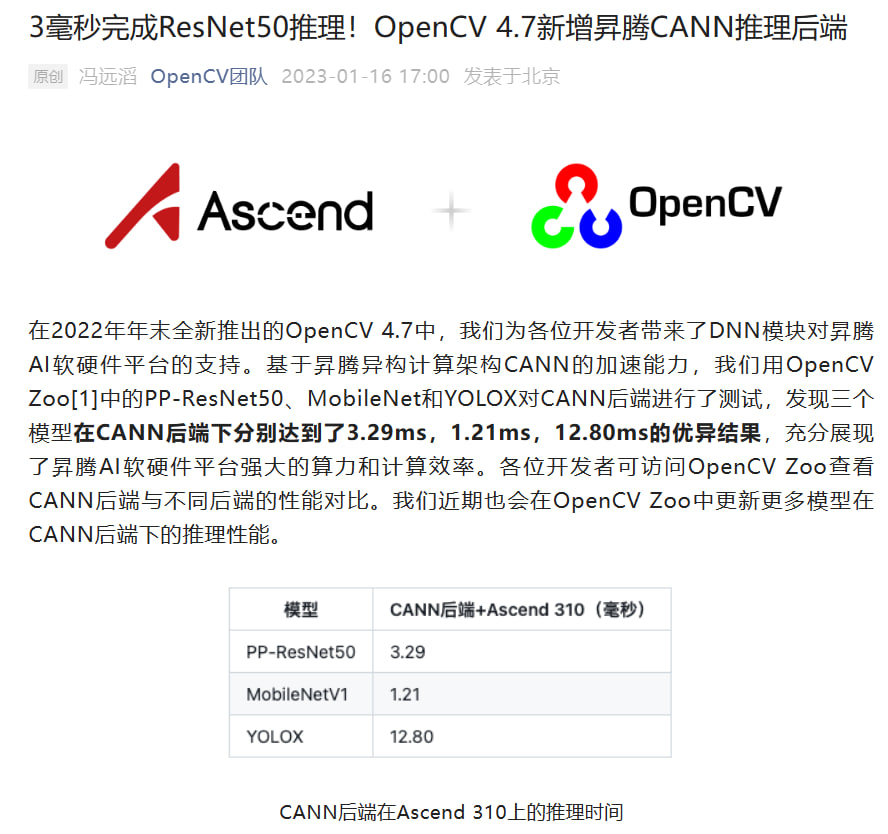News
OpenCV with Huawei Ascend surpasses Apple M1

In a recent test, OpenCV optimized for ARM CPU took 3.29ms seconds to complete ResNet50 interference with Huawei Ascend and on the other hand, Apple M1 CPU took 20ms. This is an amazing result achieved by the Huawei Ascend architecture.
The latest test conducted by the OpenCV China team reveals the latest OpenCV version is based on the acceleration capability of the Huawei Ascend heterogeneous computing architecture CANN.
The CANN backend was tested with PP-ResNet50, MobileNet, and YOLOX in the OpenCV Zoo, and it was found that the three models were different under the CANN backend. The result of this model was 3.29ms, 1.21ms, and 12.80ms respectively.

Simultaneously, the inference results of the CANN backend are basically consistent with those of the default CPU backend. With OpenCV, users only need the following 7 lines of Python code, without learning the CANN API.
Developers can simply call the Ascend AI processor to start accelerated neural network reasoning (the core is the third and fourth lines of code, and the rest are common model reasoning logic code):
OpenCV (Open Source Computer Vision Library) is an open source computer vision and machine learning software library. OpenCV was built to provide a common infrastructure for computer vision applications and to accelerate the use of machine perception in commercial products.
Unlike Intel chips with x86 architecture, the Apple Silicon M1 uses an Arm-based architecture similar to A-series chips that Apple has been designing for iPhones and iPads for years now.
Huawei Compute Architecture for Neural Networks (CANN) is a heterogeneous computing architecture developed by Huawei for AI scenarios, including the operator library and TBE operator development kit, through which you can improve the development efficiency to better match the Ascend chip enablement.
Last month, Intel launched a new OpenCV with Huawei Ascend CANN support for the DNN module to speed up convolution processing in the DNN module and the latest achievement deserves praise for surpassing Apple M1.
(via – ithome)






